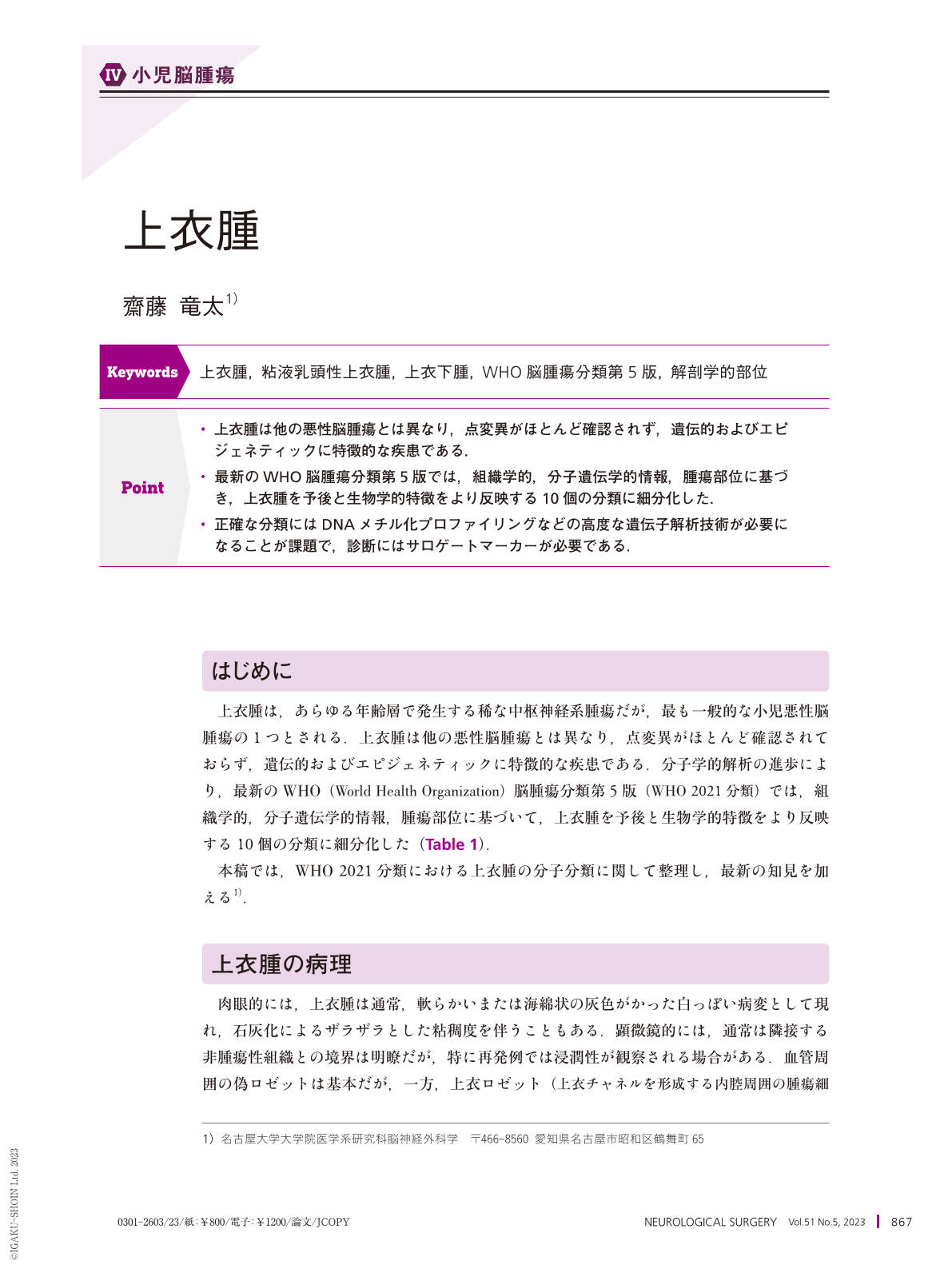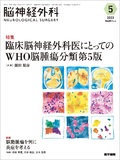Japanese
English
- 有料閲覧
- Abstract 文献概要
- 1ページ目 Look Inside
- 参考文献 Reference
Point
・上衣腫は他の悪性脳腫瘍とは異なり,点変異がほとんど確認されず,遺伝的およびエピジェネティックに特徴的な疾患である.
・最新のWHO脳腫瘍分類第5版では,組織学的,分子遺伝学的情報,腫瘍部位に基づき,上衣腫を予後と生物学的特徴をより反映する10個の分類に細分化した.
・正確な分類にはDNAメチル化プロファイリングなどの高度な遺伝子解析技術が必要になることが課題で,診断にはサロゲートマーカーが必要である.
Ependymoma is a rare central nervous system tumor that occurs in all age groups and is one of the most common childhood malignant brain tumors. Until the 3rd edition of the WHO Classification of Brain Tumours, ependymoma was classified based solely on histologic findings, but advances in molecular analysis led to the incorporation of molecular information into the diagnosis of ependymoma for the first time in the 2016 WHO Classification, 4th edition. However, the low correlation between tumor grade and survival prognosis remained a problem. Unlike other malignant brain tumors, ependymoma is genetically and epigenetically characterized with few identified point mutations. Methylation profiling was found to classify ependymoma into distinct subgroups, and the 2021 WHO Classification, 5th Edition, adopted new classifications by histologic findings, genetic alterations, methylation patterns, and anatomic location. This new classification includes 10 diagnostic entities: 1)supratentorial subependymoma; 2)supratentorial ependymoma, ZFTA-fusion positive; 3)supratentorial ependymoma, YAP1-fusion positive; 4)posterior fossa subependymoma; 5)posterior fossa group A ependymoma; 6)posterior fossa group B ependymoma; 7)spinal subependymoma; 8)spinal ependymoma; 9)spinal myxopapillary ependymoma; and 10)spinal ependymoma, MYCN-amplified. The previously accepted term “anaplastic ependymoma” was dropped. As with other CNS tumors, a new classification was introduced based on an integrated diagnosis that incorporates histologic and molecular diagnosis. In this article, we summarize the molecular classification of ependymoma in the WHO Classification of Brain Tumours, 5th edition.

Copyright © 2023, Igaku-Shoin Ltd. All rights reserved.


